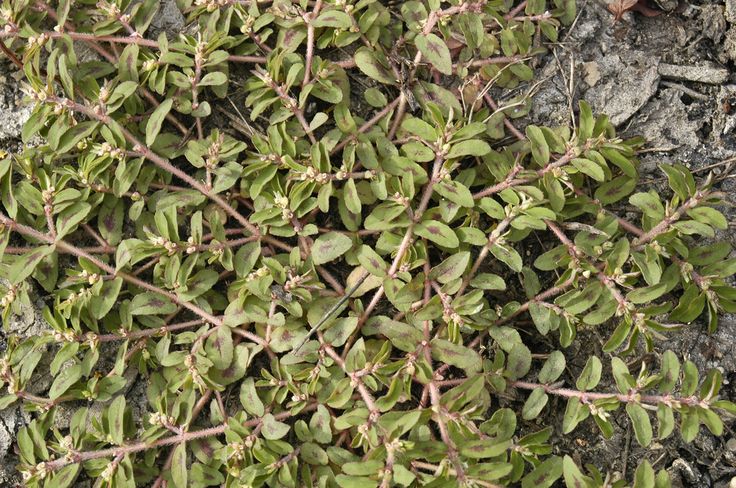You diligently pulled all those early spring weeds and your landscape was looking pretty nice. But where did all these new weeds come from? Now is the time of year when the summer annual weeds can become a real nuisance. The seeds of these weeds were waiting for the soil to warm and for the right moisture conditions to grow.
Although many plants in the spurge family are ornamental and valuable additions to our landscapes, most have aggressive roots, and some are considered weeds.
Both spotted and prostrate spurge grow close to the ground, forming a thick mat. Leaves are small and attached opposite to one another on the stems. They are actually considered the same species. The only difference is that spotted spurge has one large purplish spot in the middle of each leaf, and prostrate spurge does not. Unlike ornamental spurges, the small white-to-pinkish flowers of these weeds are hard to see. This prolific weed can go from germinated seed to a plant-producing seed in as little as five weeks. Control of those first few seedlings can prevent a serious infestation, as this weed can have several generations in a growing season. Stems exude a milky latex juice when broken that can irritate skin, so wear gloves when pulling.
There are three common varieties of pigweed in our area. All three are prolific seed producers.
Redroot pigweed is an upright plant that grows 2 to 6 feet tall with reddish roots and lower stems. The lower leaves are oval, while the upper leave are lance-shaped. The leaves have prominent veins. The flowers are green and form spike-like clusters at the ends of branches. The flower spikes also have stiff bristly spines that are unpleasant to touch. Again, wear gloves.
Prostrate pigweed is a low-growing weed with purplish fleshy stems that radiate out from a central taproot. It can grow to 3 feet wide. Leaves are oval and a half-inch wide, with the tip wider than the base. Flowers are small and difficult to see. Prostrate pigweed is not spiny.
Tumble pigweed grows 6 to 36 inches tall, forming a mound about as wide as it is tall. Unlike the other pigweeds, it has light green to yellowish stems rather than dark green. Leaves are oval with wavy margins. Small flowers grow in small spiny clusters where leaves meet the stem. As the name implies, this weed spreads by breaking off at ground level and tumbling in the wind, dropping seeds as it moves.
The good news is these annual weeds are pretty easy to pull. If you elect to use an herbicide, you need to apply it before the plants flower and set seed. If you spray them after they have bloomed and produced seed, they will not take up the herbicide, and you’ve just wasted time and money. If the weeds have gotten away from you, note the location of the infestation. You can start scouting early next summer to pull seedlings of these weeds. You can also apply preemergence herbicide to the site next spring.
Melody Hefner is the Urban IPM and Pesticide Safety Program coordinator for University of Nevada Cooperative Extension. Have a gardening question? Contact a master gardener at mastergardeners@unce.unr.edu
Credit: www.rgj.com

